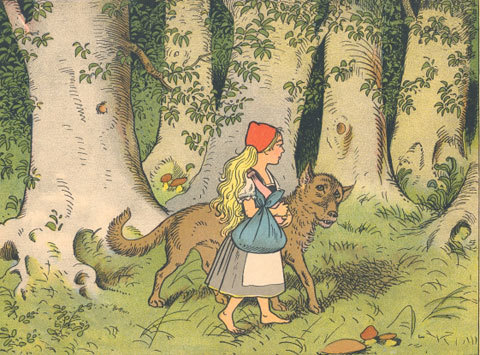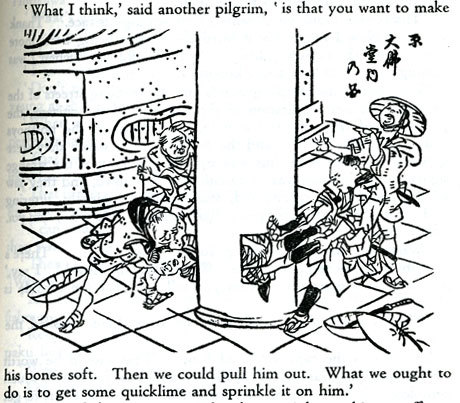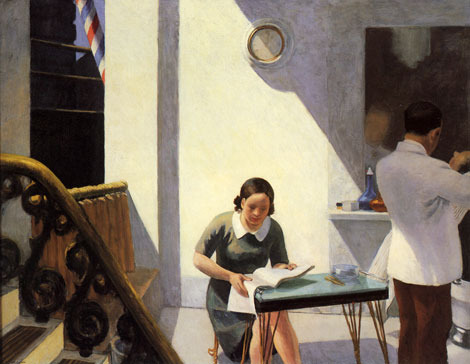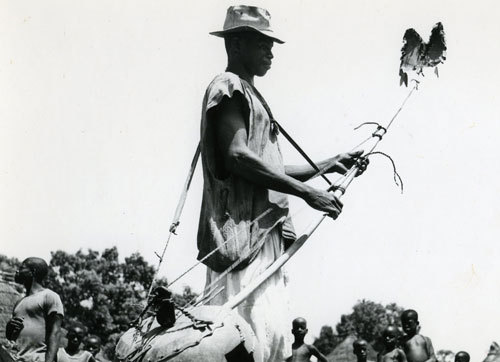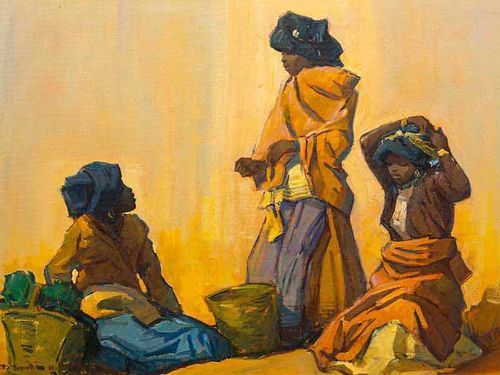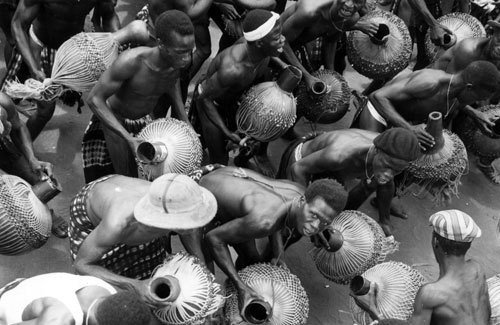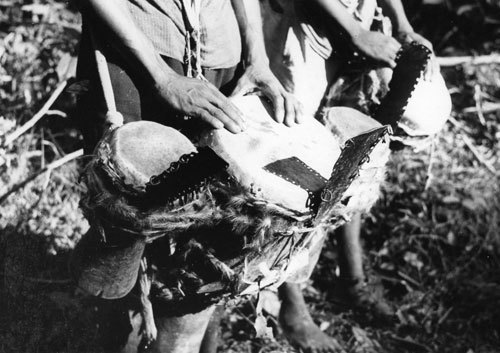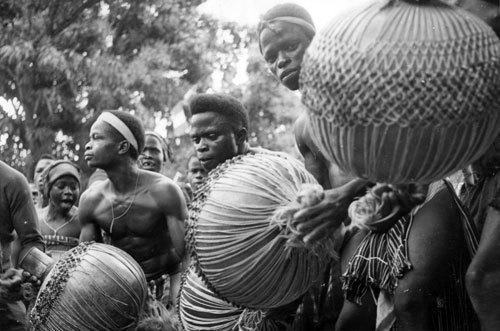Midori Snyder's Blog, page 16
September 8, 2018
Being a Fan Girl At The Highland Games
My son in law is a competitor in the Highland Games and this weekend we trundled up to Estes Park, Colorado ( 7,500 ft altitude) to watch him perform amazing feats of strength, from throwing huge stones, the seemingly impossible caber toss, the heavy hammer toss, and the sheaf toss (which is about pitching a heavy bale straight up around 12 to 15 feet in the air over a bar). And while those medal-winning activities were entertaining enough (with lots of yelling encouragement) there was also the scotch-tasting tent and drinking single malts at 10am, and many wonderful pipers, dancers, and people kilted out and dressed to kill in tartans, swords, and berets.
Like the handsome gentlemen above (two of whom were visiting from Scotland.) They were kind enough to stand for a photo with me looking squiggly and happy between them. I also wanted the photo because I wanted to remember those beautiful blue berets as I have a pattern for knitting and felting one. Next year, I am definitely coming dressed up!
September 5, 2018
Childhood's Wound
It seems that when writing fiction about childhood and rites of passage one can't escape the sorrow that comes with the process of maturation, the painful process of shedding one's skin to inhabit a new identity. Oral narratives evoke these transformations in often stark and vivid language: an armless maiden on a journey to become whole; the girl whose feet are battered from walking seven years in iron shoes; the hero who is torn to pieces and tossed over a cliff until a fantastic cow licks the broken piece together and restores him. Transition from one identity to a new one is where the tension of the narrative lies--will one survive such a process? So I was taken by these two quotations from very different works and wrote them down in my notes:
 The first is from Carlos Ruiz Zaf��n's gorgeous gothic novel, The Shadow of the Wind : "One of the pitfalls of childhood is that one doesn't have to understand something to feel it. By the time the mind is able to comprehend what has happened, the wounds of the heart are already too deep." Imagine the intensity of such felt knowledge as a child, and later, the moment of revelation in adulthood about the long lasting impact of such a wound. For the child it is about surviving the wounds and for the adult, it is trying to reconcile the contradictions of such moments in one's life.
The first is from Carlos Ruiz Zaf��n's gorgeous gothic novel, The Shadow of the Wind : "One of the pitfalls of childhood is that one doesn't have to understand something to feel it. By the time the mind is able to comprehend what has happened, the wounds of the heart are already too deep." Imagine the intensity of such felt knowledge as a child, and later, the moment of revelation in adulthood about the long lasting impact of such a wound. For the child it is about surviving the wounds and for the adult, it is trying to reconcile the contradictions of such moments in one's life.
 The second quotation comes from Early Spring, the memoir of Danish author Tove Ditlevsen. Ditlevsen grew up in a brutal and brutish working-class family -- one that had little respect for her as a girl and even less for her hopes of becoming a writer. It was a stifling, heart-breaking world and it is a marvel that she survived it and eventually thrived as an author. She muses about her experience of childhood in a dark chapter that opens with, "Childhood is long and narrow like a coffin, and you can't get out of it on your own." I think this is important because it suggests that whatever self-awareness one has about the wounds of the heart from childhood, we instinctively search out those who can give us a hand out of that coffin-like despair. Friends, older siblings, fairy godmothers, even long-dead authors whose works give us a view much larger and more abundant in scope than our own.
The second quotation comes from Early Spring, the memoir of Danish author Tove Ditlevsen. Ditlevsen grew up in a brutal and brutish working-class family -- one that had little respect for her as a girl and even less for her hopes of becoming a writer. It was a stifling, heart-breaking world and it is a marvel that she survived it and eventually thrived as an author. She muses about her experience of childhood in a dark chapter that opens with, "Childhood is long and narrow like a coffin, and you can't get out of it on your own." I think this is important because it suggests that whatever self-awareness one has about the wounds of the heart from childhood, we instinctively search out those who can give us a hand out of that coffin-like despair. Friends, older siblings, fairy godmothers, even long-dead authors whose works give us a view much larger and more abundant in scope than our own.
September 4, 2018
Working On A Bordertown Novel: First and Last Chapter Are Done
When it comes to writing novels, I am tortoise, but occasionally, a subject surprises me. Two days ago I wrote a first chapter, and then a day later, in a frenzied moment, the last ecstatic chapter of what will be a Bordertown novel. Now I just need to figure out how to get from one end of the story to the other. Seriously weird, but strangely exhilarating too.
For assistance, I return to a 1968 Paris Review interview with the great Canadian author Robertson Davies where he describes his writing process, a laborious and methodical investigation long before the narrative is written.
"I am at the moment winding up to write another novel, and when I say ���winding up��� I mean I am making notes and plans and perpetually building up what I will eventually write; that is the way I work. I make very, very careful plans and a great many notes���so many notes indeed that sometimes they are as long or longer than the eventual book. And sketches of characters and suggestions and references to things that will be useful. All that takes a long time. Getting to work on a new novel is a dismal business, for the beginnings never seem to get any easier with the passing of time. I toil like a swimmer who feels himself about to sink beneath the waves at any moment. Like all my novels, this one began with quite a simple idea, but as I work on it a mass of complexities assert themselves, and I have to struggle to keep from being overwhelmed by extraneous detail. But then���at least the way I work���when you begin to write, you can write quite briskly because you have done all the preparatory work beforehand. I hope it turns out well. But with novels, like cakes, you never know. Even when I finish a book, I���m never sure whether it is good or rubbish."
So, I will making furious notes, plotting, character studies, and the rest -- and I pray the cake will hold. And that will be good. And can I just add, that I love even more that Davies used a food analogy -- another habit of my family when talking about literature that is close to my heart.
The wonderful illustration is by Guillaume Ospital and you can more of his terrific work at Cake or Death website.
September 1, 2018
Shank's Mare: Hoofing It Down the Tokaido Road
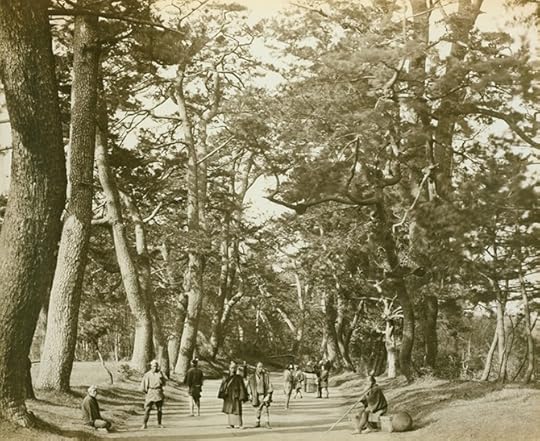
I love "road books" -- novels whose plot mostly rest on a pair, or a troupe of travelers making their way down some famous road. Adventures abound, stories are shared, and the journey becomes way more important than the final destination. One of my favorites, which I have picked up again after many years, is the early19th century novel, Hizakurige by Ikku Jippensha. The title, a word for "journeying by foot" has been translated into the English version: Shank's Mare -- our own wonderful expression of the same. The book is now sadly out of print -- but well worth the effort if you can find it in a library or a used book shop.
 The novel is hilarious, bawdy, and outrageous as it follows the mis-adventures of two lower class workers, on a trip (ala shank's mare) along the great Tokaido Road between the capital city of Edo and the temple-filled Kyoto. Yaji and Kita manage to embroiled themselves in all kinds of lusty and disreputable doings as they rest at inns, and way stations along their way. They are not alone of course -- for the road is peopled with tradesmen, samurai, "lively dancing girls," itinerant actors, and scheming matrons -- all who are grist for the pair's irrepressible appetite for trouble. Who knew travel could be such an endless source of fun, trickery, one night stands, good food, bad booze, and in general absurd observations about life from two brash, madcap punsters looking for a good time.
The novel is hilarious, bawdy, and outrageous as it follows the mis-adventures of two lower class workers, on a trip (ala shank's mare) along the great Tokaido Road between the capital city of Edo and the temple-filled Kyoto. Yaji and Kita manage to embroiled themselves in all kinds of lusty and disreputable doings as they rest at inns, and way stations along their way. They are not alone of course -- for the road is peopled with tradesmen, samurai, "lively dancing girls," itinerant actors, and scheming matrons -- all who are grist for the pair's irrepressible appetite for trouble. Who knew travel could be such an endless source of fun, trickery, one night stands, good food, bad booze, and in general absurd observations about life from two brash, madcap punsters looking for a good time.
In the illustration below, Kita and Yaji have stopped at Hokwo Temple to ogle at huge statue of Rushana in a sitting position. After making a few inappropriate comments about the august figure ("And he's got whayoumaycallems as big a badger") the pair discover that pilgrims are engaging in a fun game with the substantial beams used to support the roof. They squeeze themselves through cut openings near the bottom of the beams. Kita has no trouble -- but when the plumper Yaji wriggles in, he discovers he is quite stuck. What follows is a fast, comical dialog with every country pilgrim making outlandish and perilous suggestions as to how to get Yaji free.
The author Ikku Jippensha wrote the novel first as a serial and it was wildly popular throughout Japan in the early 19th century. Later, the whole series was published as a book that included wonderful illustrations -- some of which (like the one above)have been reproduced in the English edition published by Tuttle and translated very ably by Thomas Satchell (which is saying a lot as the puns themselves are a translator's nightmare -- look for the very helpful notes in the back.)
For the convenience of travelers, the Tokaido Road was serviced by 53 well known "way stations" where one could find inns, food, and shelter for animals. The well known Ukiyoe print maker, Hiroshige created around 55 separate prints of the 53 stations which are a fantastic visual record of the stations along the road. They are gorgeous -- some depicting the stations in winter, others in spring, some bustling with travelers, others more remote with only horses quietly grazing. I have included a selection down below, but happily you can see all of Hiroshige's Tokido Stations here. The photograph of the Tokaido Road above was take in 1865 by Felice Beato.
August 31, 2018
Old Bones, New Tales
This is an odd moment. Three book ideas I have been working on lately have suddenly come into clarity as a single cloth -- not as a trilogy mind you, for each is different enough from the other -- but organically they seem to spring from the same desire to write about early, middle, and late life. I feel as though on any given day, I could write in all three manuscripts without missing a beat. Two at least are set in Italy (thank god the research here helps both novels). The third is contemporary fantasy, so familiar ground.
As I am now in my sixties, I think this sudden meta-thinking about the novels has a lot to do with my age. When studying African oral narratives, I learned that women storytellers in South Africa (and probably in every traditional society) told the same stories (with some changes in emphasis depending on the audience) to all different ages. When the audience was a mixture young to old, the tales were meant to be entertaining and to introduce the very young to the artistry of story-telling. Other times it was intended for a specific audience such as young women going through rites of initiation, and there the same stories acquired an instructional emphasis, the tales focusing on transformation to adulthood.
However, older women also performed those same stories privately to each other. All of them so well versed in a lifetime of living and of telling those tales. They knew these stories intimately, and in the variants of the tales they told each other, there was depth and nuance in the performances. It was an opportunity for them to reflect and to comment through mature and evocative performances of the tales on their past rites of passage; their lives as young women, as wives or co-wives, as mothers, and now as elders. One of the great Xhosa storytellers Nongenile Masithathu Zenani towards the end of her life performed three, one-hundred-hour epics. Each epic was performed over about 21 days --with Masithathu speaking for 5 to 6 hours each day. And like Scheherazade, each morning she picked up the tale where she left off the night before. She composed the epics from the threads of the oral narrative stories she had learned and told throughout her life, intertwined with a wealth of cultural details and a social history of the Xhosa. (I am still waiting to read one day the final translation of these three epics which were recorded and transcribed by Professor Emeritus Harold Scheub.)
As authors, we continue to reach back into the deep well of inherited stories -- the universality of rites of passage means every generation will want to hear them, read them, and connect to them. But unlike traditional society where the oral narratives and epics could be learned at the knee and then repeated (though different variants even within a culture suggest personal embellishment and emphasis in the telling), modern authors are always required to reinvent old tales and make them "fresh" -- sometimes with wonderful results and sometimes with stunningly bad ones. (I can never get over the dreadful Beowulf movies...Beowulf in Space, Beowulf with a Golden Stiletto-Heeled Monster mother).
So I guess this is the big challenge now for me. Trying to be faithful the tales, to take the time to reflect on how they have shaped and articulated different moments in my life, and yet, satisfy the craving to create something new, something "fresh" out of very old but venerable bones.
For more reading:
* Life Histories of African Women, edited by Patricia W. Romero which contains the autobiography of Nongenile Masithathu Zenani recorded, transcribed, and translated by Harlod Schueb.
**The Word and the World: Tales and Observations from the Xhosa Oral Tradtion. "A master storyteller of the Xhosa people of South Africa, Nongenile Masithathu Zenani gives us an unprecedented view of an oral society from within. Twenty-four of her complex and beautiful tales about birth, puberty, marriage, and work, as told to the renowned collector of African oral tradition, Harold Scheub, are gathered here. Accompanying the stories are Zenani���s detailed commentaries and analyses and Scheub���s striking photographs of her in performance. The combination of these historical and cultural observations with a richly symbolic collection of tales from a single traditional storyteller make The World and the Word a remarkable document."
Art: Edward Hopper: In the Barber Shop, 11:00AM, Summer in the City
August 30, 2018
Orality and The Singer of Tales.
I am continuing with my notes on reading Walter Ong's Orality and Literacy, with some sidesteps to look at authors, whose work Ong references: Milman Parry and Albert Lord whose Singer of Tales is a fascinating study not only of the structure of Homer's Illiad and The Odyssey but also the important use of mnemonic devices in works that are orally performed and transmitted. So here are the key interesting ideas for me:
Milman Parry analyzing Homer's Illiad and The Odyssey discover that every distinctive feature of Homer's poetry is due to the economy enforced on it by oral methods of composition. These were never performed the same, as poets in an oral culture do not "memorize" the text, but "stitched together prefabricated parts." They recognized a collection of epithets (so many versions of "the wine-red sea") that had different meter lengths and could be used anywhere in the text as the poetry required. This certainly makes sense to me where both epics and tales were highly patterned -- usually the only consistent feature of different collected variants of the same epic or story. According to Harold Scheub's observations, even a child of five can be a reasonable good storyteller because she will have learned the patterning of the narrative, having it heard it repeated with every telling.
Ong argues: "Homeric Greeks valued cliches because not only poets but the entire oral noetic world or thought-world relied upon the formulaic constitution of thought. In an oral culture, knowledge once acquired, had to be constantly repeated or would be lost." However, I would add, that the repetition itself, needed to be evocative and interesting, eliciting a variety of emotions out of the listener to engage them and that is when repetition becomes art, rather than a list of items to be recalled. Ong expresses David Bynum's ideas, (The Daemon in the Wood,1978) that "the clusters constitute the organizing principles of the formulas so that the essential idea is not subject to clear, straightforward formulation but is rather a kind of fictional complex held together largely in the unconscious." And so strong is the idea of the formulaic portions of storytelling that "they ride deep in the conscious and unconscious" and don't vanish the moment literacy is introduced, but often are reproduced even in early written form by those from the oral culture who have learned to write --mimicking at times the oral performance. (Amos Tutuola's brilliant The Palm Wine Drinkard is an excellent example of this -- although in Nigeria he received criticism, mainly from educated Nigerians because of what was perceived as low-class, uneducated English.)
I find this particularly interesting because when a fairy tale transforms from its oral version (which ironically we can only read in transcribed texts) into a literary tale, it runs the risk of losing its profound evocative nature. Repetition and patterning into forms organize the details of the story, creating tension when the human and the fantastic interact -- emphasizing not just the surface movement of the tale, but all the complicated feelings such arrangement of images brings forth to the listener. In some ways, it is closer to music (or indeed, singing the tale) -- we are aware of the patterning, the phrases, the way they move from introduction to increasing complicated arrangements and then a coda which feels like the beginning but isn't because of the experience of the journey to get to the end. There is for the analyst the social message -- what is the story trying to tell us? I think it's more a case of how is the story making the audience experience through its techniques, our lives as lived in that moment of the telling, and because our lives are always changing, allows us to hear the same tale over and over, and find in it something new.
Photo: "Griot" �� Emile Snyder, 1963, Tittia Frasciotti, Galekea Women, 1988.
Putting Together My Father's Research With The Photos: West Africa 1963-64
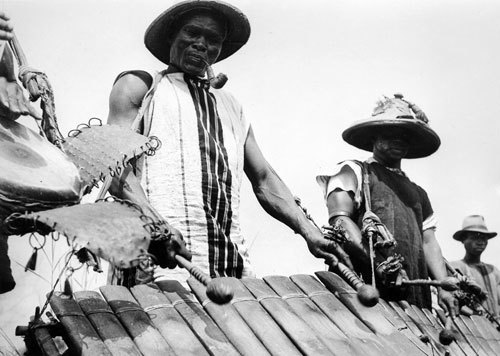 Balafon performance in the streets of Conakry, Guinea. ��1963 Emile Snyder
Balafon performance in the streets of Conakry, Guinea. ��1963 Emile Snyder
Among the amazing documents that have floated my way over the years was a manilla folder full of gorgeous black and white photographs my father took in the Ivory Coast (well..they were developed there and some of them might have been also taken in Senegal, Mali, or Guinea). Among my mother's papers that I received after her death was a carefully cached collection of letters that my parents had written to each other during fall 1963 to spring of 1964, when they were both abroad on Ford and Fulbright grants-- he to numerous countries in West Africa and she to India, Bhutan, and Sikkim.
The letters are very interesting, and cringe worthy in places. One third love letters (with some surprising revelations about their sex life I could have survived never knowing about), one third about money (there was never enough and what there was always came late allowing for some desperate nail biting) and one third talking about the research and the separate lives they were having on their different continents.
As I read through the research parts of my Dad's letters, I learned a lot about these photographs--especially that he had done many field recordings of musicians, griots, and small village brass bands. He had made friends with many African writers at the very start of their careers as authors in 1963, he had met and become friends with Leopold Senghor, President of Senegal, and other writers and poets turned diplomats -- who also gave him music tapes and recordings (especially the radio stations eager to get their music out to the West as well as Africa.). He sent 25 or so tapes back to the states with friend and ethno-musicologist Robert Garfias who returned them to the Ethnomusicology Archives at the University of Washington, Seattle, WA.
I went looking for the tapes in the archives -- as this was the first I knew that they had been properly given over to someone. I was so excited to find them listed here and here. So I will be sending scans of all the photos (plus more of the notes I discovered in his letters) to the archive there -- delighted that future students will have a chance to see these images and connect them to the music on the tapes. In many ways, the best part of finding all these papers is being able to share the really great parts of their careers with others -- to share those moments in history where they saw something, heard something, or wrote something that still matters.
All the photos can be found here -- or by clicking the link to "West African Musicians" in the left hand side bar. And all photos are ��1963 Emile Snyder -- please email me at the blog to request permission to use these photos.
August 29, 2018
Inspiration in "La Stigmatise" by Georges Moreau de Tours
Portuguese artist Jo��o Lemos sent me this gorgeous and entirely unexpected painting "La Stigmatis��e" by French painter, Georges Moreau de Tours (1848-1901). And what a narrative it visually suggests -- rich and full of possibilities: a sensual image of a young woman, where both the dressings over the stigmata of her hands and her clothing are unraveling. She appears languorous, almost trance-like in her calm, while the onlookers are tense, agitated, a hand gripping the sleeve of another as though threatened by the spectacle of the reclining woman. There is just so much going here, all of it ambiguous: earthy and ethereal, masculine and feminine, still and agitated, acceptance and skepticism all at once.
August 28, 2018
A Writer and A Mother: I Must Be Crazy
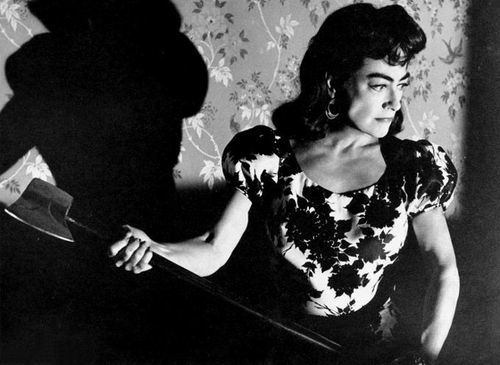
I keep on my bulletin board two newspaper headlines to remind me that I just might be a few bubbles off plumb. The Milwaukee Journal (March 30, 1987) boldly states "15-year study of writers finds high rate of mental illness," while the Toronto Star (August 16, 1986) announces "Researcher probes ties between insanity and being a mother."
Wow...with odds like that, it's a wonder that I get anything done without burning down the house, or dancing naked in the front yard on a full moon with a colander on my head.
Do I hear voices in my head? Sure I do...it's called writing dialog. Do I get anxious and tear my hair? Sure...it's from having a pair of risk-taking, independent children who insist on doing insane things of their own (for example sailing a 22ft sailboat across the Great Lakes in September and surviving gail force winds in the Straits of Mackinaw, or hitching a ride on a shipping boat from Sardinia to Barcelona to surprise a friend.) But hey, books get written, children grow up, and so far nobody has gotten the ax.
Photo: Joan Crawford in Straight Jacket.
August 27, 2018
Johnny Fahey and The King of Crows
Many years ago in a moment of inspiration, I wrote a little short story called "King of Crows." It is till one of my personal favorites as it has threaded throughout a song or a tune humming beneath the narrative. I am almost never without a song running in my head, singing to the dishes, or driving in traffic, or even when writing I will hear the song that evokes the feelings of the moment I am describing. "King of Crows" is a small tale of love found and lost, of the transformative power of song. And I'll admit, the moment the fiddler Johnny Fahey appeared in my imagination, I loved him. An itinerant musician, traveling the Southwest, he stops to rest in a box canyon, only to discover it is home to the King of Crows and his court. And there is one who catches his eye...(Read the full story here.)
Excerpt from "King of Crows."
The crows parted at Johnny���s approach, some turning astonished faces at his unexpected presence, but never stopping in their cries. It wasn���t until Johnny stood before the girl with the white skin and the black hair that the violent arguments subsided into grumbles and then at last into an uneasy silence. The girl stared at him with curiosity, her head tilted to one side as the glittering eyes fastened on his face. A smile crooked the edges her mouth, and the arched brows drew together in a challenge.
���Who are you?��� she asked, voice sharp as a scythe.
���No one as grand as you,��� he answered softly.
She lifted her chin proudly, the sweep of black hair flowing over the curve of her back. Opals sparkled in her earlobes like tiny stars, and around her waist she wore a belt of turquoise and fresh water pearls.
���What are you?��� she demanded, shoulders hunched and face thrust forward.
���A musician,��� he said, arms resting at his sides.
The cloaks of the crows fluttered in the rising wind with a dry chaffing noise.
���Play for us,��� she ordered.
���Rilka, we���ve no time for this!��� a man barked. Johnny Fahey turned to the man, hearing immediately the authority in this voice. A singular voice after so much discord. The man was old, the plumage of his cloak speckled at the breast and dull and ragged along the hem. But circling his forehead was a narrow crown of silver, set with turquoise. There was still power in his carriage, the heavy body leaning over his hips, his shoulders arched back. In one hand he held a scepter made from a fresh stalk of corn that gleamed as bright as newly minted gold. Johnny had no doubt but this was the King of Crows. He looked back at the girl called Rilka, and the music in his heart stumbled as he realized that the girl with moon-white skin and black hair was the King���s daughter. No chance for you, the sad chords played, no chance this haughty creature could be charmed by the fiddle���s song.
���I want to hear it, Father,��� the girl demanded, ���if only to hear something other than their bickering,��� and she tossed her head toward the line of men who stood glowering at the quiet figure of Johnny Fahey.
The King rolled his eyes to the blue bowl sky.
���Spoiled bitch,��� came a nasty whisper followed by snickering.
���Play then!��� the King roared, turning on the restless court to silence them.
Rilka lowered her face, the shadow of her hair on her cheek not quite hiding the angry blush. Johnny winced seeing how the insult cut her pride to the quick. But he took out his fiddle and tucked it under his chin. He rested the bow over the strings and waited a moment more to hear what the wind would bring him. A tune came from listening, knowing what was already playing in the hearts of those gathered. He thought he could well guess at the tunes a crow might wish ��� something wild, with the harsh rasps of the double-stops. Then Rilka lifted her face, and he saw in the dark eyes an unexpected hint of longing, of gentleness.
"The soft whisper of her sigh touched him, and without intending to, he lowered his fiddle again and began to sing slowly in a clear tenor voice.
I met a fairy woman
At the river���s eddy.
And I asked her
Would anything unlock love?
She said to me in whispered words,
When it enters the heart
It will never be released.
There followed a silence, filled only with the rise and hollow of the wind in the grass. Johnny Fahey heard the slow beat of his filled heart. Abruptly he put the fiddle beneath his chin again and played a reel as fast as his song had been slow. He might gain her, the notes sang, but how could he keep her? He might lose her now, but she would be forever in his thoughts. Amber rosin smoked over the strings and the white hairs of his bow broke like the strands of a clinging web. He drove the tune, as if to empty the sight of her face from his heart, and yet as he finished the last notes he looked up and her glittering eyes snared him.
Midori Snyder's Blog
- Midori Snyder's profile
- 87 followers




